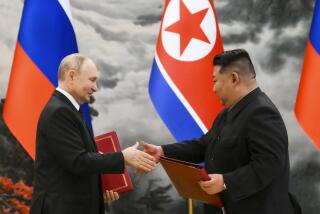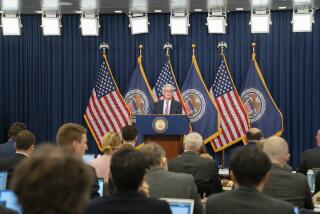A Crisis From Underregulation
When the Korean crisis first broke out, many commentators argued that it was the result of an intrusive state forcing banks to lend to unprofitable firms. The medicine to cure the countryâs economic ills, it was argued, was to ditch the defunct state directed economic system, which some people likened to those of the Soviet Union or East Germany, and to create in its place a âgenuineâ market economy through an extensive liberalization of finance, international trade and the labor market. But is this a valid approach?
The current Korean crisis is essentially a financial problem rather than a crisis of the âreal economy.â Most of the countryâs manufacturing firms make products that sell even in the most demanding markets--if the exchange rate is right. During the last couple of years, the won clearly was overvalued by 10% to 20%; but even then, on the eve of the crisis, the current account deficit was just over 3% of gross domestic product and is now falling after the recent devaluation. Yet we saw current account deficits of 8% to 10% in Thailand and Mexico before their recent crises, and in previous downturns Korea had current account deficits approaching 9% of GDP. Furthermore, most foreign loans financed investments in export sectors rather than real estate development or imports of consumer goods, as was the case in Mexico and Southeast Asia. The Korean budget is largely in balance and gross public debt amounts to only 3% of GDP. There has been little significant inflationary pressure in the economy. Then why did Korea crash?
The current crisis is largely the result of a policy failure by the outgoing government of Kim Young Sam. It is failure of underregulation rather than of overregulation as the popular view holds. Deregulation had been the proclaimed policy objective of Kimâs government, and although no radical deregulation occurred, state control relaxed enough to make important differences. The government abandoned its traditional role of coordinating investments in large-scale industries, thus allowing excess capacities to emerge in industries like automobiles, shipbuilding, steel, petrochemicals and semiconductors, which eventually led to the fall in export prices and the accumulation of nonperforming loans.
In the name of financial liberalization, the government also failed to monitor properly foreign borrowing activities, especially by inexperienced merchant banks. This resulted in a rapid buildup of debts totaling $100 billion with a very poor maturity structure; 70% of these debts carry less than a yearâs maturity. Finally, Kimâs advisors were sold on the monetarist idea that inflation control is the most important objective of government policy and that the exchange rate should be an âanchorâ in inflation control. This caused a significant overvaluation of the currency, hurting export performance.
The Kim government was confused and incompetent as the economic troubles began. It dithered over the fate of the third largest car manufacturer, Kia, unnecessarily undermining confidence in the economy. As the currency crisis grew, it wasted $10 billion (more than one-third of its dwindling foreign exchange reserve) trying to defend an indefensible exchange rate, thus exacerbating the foreign exchange shortage. External causes also came into play. Southeast Asiaâs doldrums reduced demand for Korean exports and dealt a blow to some Korean financial companies that had been speculating in Southeast Asian financial markets. The entrance of new Taiwanese semiconductor manufacturers drove down the prices of memory chips, which accounted for nearly 20% of Korean exports when their prices were high. Chip prices fell from nearly $50 to $4. But the main problem was a failure of oversight by a government priding itself on deregulation.
Having met the crisis, is the International Monetary Fund program the best medicine for Korea? The second bailout at the end of December underlines a number of important problems with the basic IMF package. First, its strong deflationary bias made the credit crunch that firms are facing even worse, leading to a chain of bankruptcies and possibly driving the economy toward depression. The IMFâs 5% inflation target was already too deflationary, given that the economy has to deal with a big rise in import prices due to devaluation; with the excess liquidity released by financial sector bailouts and the further fall of the currency since the signing of the agreement, this target now seems indefensible.
More worrying than the deflationary bias of the IMF is its insistence on financial liberalization of the economy. Korea needs better, not less, financial regulation. Bad debts need to be cleaned up before the banks can be granted more freedom. Moreover, more time is needed to determine which are the really viable financial institutions and which need to be closed down. All of this requires time, which the IMF program does not allow. Worse, the IMF wants a quick opening up of financial markets to foreign participation, which exposes the economy to high volatility. What such volatility can do to an economy is clearly shown by Chile in the late 1970s and recent experiences in Mexico and Southeast Asia.
Finally, the IMF acted without consulting the Korean people, leading to widespread talk of national humiliation and foreign trusteeship. The likely result is that the IMF program, with its heavy deflationary bias, will result in a sharp rise in unemployment and will be met by massive political resistance. The IMFâs way of meeting these dangers was to say that the country needs to strengthen its unemployment insurance system, as if this can be achieved at a time of fiscal retrenchment. If the political backlash materializes, the entire IMF program will be jeopardized.
The new government of Kim Dae Jung, with its more consensual approach to politics and stronger ties to the small firms and trade unions that are going to be hurt most in the process, may be in a better position to pull the country through a period of deflation and job losses and toward robust growth. But it must also find new ways to reinvigorate the coordinating and regulatory mechanisms of previous governments without the negative features of the old system, such as corruption, nepotism and excessive bureaucratic rigidity.
More to Read
Sign up for Essential California
The most important California stories and recommendations in your inbox every morning.
You may occasionally receive promotional content from the Los Angeles Times.










